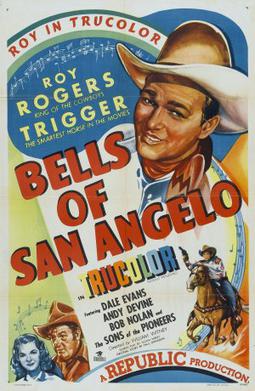
Snowflake was a western lowland gorilla who is the world's only known albino gorilla to date. He was kept at Barcelona Zoo in Barcelona, Catalonia, Spain, from 1966 until his death in 2003.

A foal is an equine up to one year old; this term is used mainly for horses, but can be used for donkeys. More specific terms are colt for a male foal and filly for a female foal, and are used until the horse is three or four. When the foal is nursing from its dam (mother), it may also be called a "suckling". After it has been weaned from its dam, it may be called a "weanling". When a mare is pregnant, she is said to be "in foal". When the mare gives birth, she is "foaling", and the impending birth is usually stated as "to foal". A newborn horse is "foaled".

Trigger was a 15.3 hands palomino horse made famous in American Western films with his owner and rider, cowboy star Roy Rogers.

Jack Perrin was an American actor specializing in Westerns.

Horses exhibit a diverse array of coat colors and distinctive markings. A specialized vocabulary has evolved to describe them.

Guns of the Magnificent Seven is a 1969 Western, styled in the genre of a Zapata Western, the second sequel to the classic 1960 Western action film The Magnificent Seven, itself based on Akira Kurosawa's Seven Samurai (1954). The film was directed by Paul Wendkos and produced by Vincent M. Fennelly. It stars George Kennedy as Chris Adams, the character Yul Brynner portrayed in the first two films.

Varnish roan describes a horse with coloration similar to roan, but with some changes in color over the years, though not to the extreme of a gray. This type of roaning only occurs in conjunction with the Leopard complex. Varnish roans are born with a dark base coat color, usually with some spotting. As the horse ages, white hairs increase over most of the body, and many spotted markings blur or fade. The varnish roan pattern often appears to spread from the white of any original markings. This color pattern is best known in the Appaloosa breed of horse.

Fred "Snowflake" Toones was an American actor and comedian. He appeared in over 200 films in his career spanning 23 years.

Victor Wong was a Chinese American actor. While Wong appeared in numerous films through the 1930s and 1940s, they were largely small uncredited parts. His memorable role was as Charlie the Cook in the movies King Kong (1933) and Son of Kong (1933). Wong's most memorable scene came in the original film when he finds evidence that natives have kidnapped Ann Darrow. He yells, "All hands on deck! Everybody on deck!" This causes panic aboard ship which begins the quest for Ann's whereabouts. The Charlie character in the sequel was more prominent to the story and included significantly more screen time for Wong. The character has since been criticized for being a racist stereotype, particularly for his exclamation of "Crazy black man been here!".

Harry L. Fraser was an American film director and screenplay writer.

The leopard complex is a group of genetically related coat patterns in horses. These patterns range from progressive increases in interspersed white hair similar to graying or roan to distinctive, Dalmatian-like leopard spots on a white coat. Secondary characteristics associated with the leopard complex include a white sclera around the eye, striped hooves and mottled skin. The leopard complex gene is also linked to abnormalities in the eyes and vision. These patterns are most closely identified with the Appaloosa and Knabstrupper breeds, though its presence in breeds from Asia to western Europe has indicated that it is due to a very ancient mutation.

Bells of San Angelo is a 1947 American Trucolor Western film directed by William Witney and starring Roy Rogers. The first Roy Rogers film shot in Trucolor, this modern day Western mixes half a dozen songs with mystery, international smuggling of silver, violence, a pack of dogs and comedy relief with one character packing a "16-shooter" from which 22 shots can be heard during the musical number "Hot Lead" performed by the Sons of the Pioneers.

Night Time in Nevada is a 1948 American Western film directed by William Witney and starring Roy Rogers.

Casey's Shadow is a 1978 Metrocolor sports drama film directed by Martin Ritt and starring Walter Matthau. The film is based on an article in The New Yorker by John McPhee. Much of the exterior shooting was done in the city of Carencro, Louisiana, 20 miles north of Lafayette.

Betty Mack was an American stage and film actress who appeared in over 45 films between 1931 and 1941. She became Betty Yohalem after her marriage to George Yohalem in 1941. She wrote I remember…. Stories and Pictures of El Dorado County Pioneer Families.

The County Fair is a 1932 American pre-Code drama film directed by Louis King and starring Hobart Bosworth, Marion Shilling and Ralph Ince.
Snowflake is a derogatory slang term for a person, implying that they have an inflated sense of uniqueness, an unwarranted sense of entitlement, or are overly emotional, easily offended, and unable to deal with opposing opinions. The term gained prominence in the 2010s, and was declared by The Guardian in Britain to be the "defining insult of 2016", a term "thrown around with abandon in the wake of Brexit debate in the United Kingdom and the 2016 US election".
Karney is an Irish surname. Notable people with the surname include:
Arthur A. Brooks (1906–1982) was an American film editor. He worked in Hollywood for a variety of independent companies.

Desert Justice is a 1936 American western film directed by William Berke and starring Jack Perrin, Warren Hymer and David Sharpe.

















